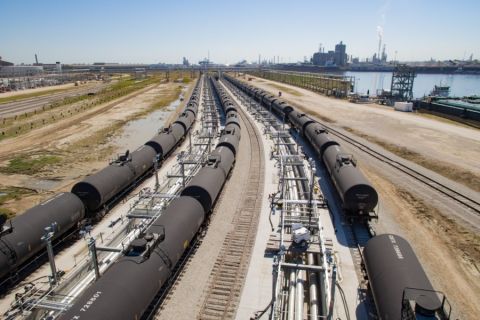 |
| Shale Gas Plays |
?There is significant shale-gas resource potential in the Rockies, based on the sheer number of plays being explored, according to U.K.-based energy-research and -consulting firm Wood Mackenzie’s study of seven shale-gas plays in the Rockies.
“The region holds a number of shale-gas plays that have either been overlooked or were produced with other tight-gas plays,” says Connie Lin, upstream research analyst for Wood Mackenzie. “While it is too early to quantify the impact of these plays until they enter the development phase, should these companies succeed, the Rockies could become a major producer of commercial shale gas in the Lower 48.”
Lin says operators are ramping up drilling operations. The Wood Mackenzie study profiles the Gothic, Cody, Cane Creek, Baxter, Mancos, Lewis and Pierre shales.
The seven plays are in six basins and are in various stages of exploration. Vertical depths range from 3,000 to 16,000 feet and the typical play has multiple pay zones. Initial production rates are highly variable and have reached as much as 12 million cubic feet per day in the Cane Creek play.
Lin adds that well costs and completion methods are still being modified as companies learn more.
“The success of the Barnett shale in the Gulf Coast has spurred development of shale gas throughout the U.S.,” Lin says. “While the Rockies region has successfully produced from unconventional resource types, shale-gas plays have largely been untapped. Many of these plays are currently being tested for their commerciality. Some of the other plays have been commingled with other reservoirs and produced for many years.”
Two Rockies shale plays, the Lewis and Mancos, have been producing since the 1990s. However, their production has been mostly commingled with other formations in order to reduce costs and improve yield. Companies are evaluating the development of these shales as stand-alone plays.
The Lewis shale, a sandy siltstone with four pay intervals, is commingled with the deeper Mesaverde and Dakota formations in the San Juan Basin and the shallower Almond formation in the Greater Green River Basin.
Linn says operators typically complete the Lewis as a secondary zone. In the San Juan Basin, the main players are ConocoPhillips, BP Plc, Chevron Corp. and XTO Energy Inc. Within the Greater Green River Basin, Continental Resources Inc., BP and Anadarko Petroleum Corp. are assumed to be testing the Lewis shale, due to their large positions in Wamsutter.
The Mancos is a shale interbedded with siltstone. In the Uinta and Piceance basins, Mancos wells are commingled with the Wasatch, Mesaverde and Blackhawk formations. Companies such as Gasco Energy Inc., XTO, Bill Barrett Corp., EOG Resources Inc. and Anadarko are now looking to develop the shale as a separate play.
Lin says preliminary estimates suggest the Cane Creek and Pierre shales each hold multiple trillion cubic feet of gas reserves, with Cane Creek standing out as the highest-performing play based on well results.
Others, such as the Baxter, Gothic and Cody shales, are still in the testing phase and their reserve potential is unknown. Baxter has one of the largest gas-in-place resources of any U.S. shale; however, due to the high well cost and low production rates, operators have not yet been able to fully exploit the shale.
Lin says the Mancos shale has been produced with other formations and is being tested as a stand-alone play in the Uinta Basin. Companies are also exploiting the Lewis shale as a separate play in the Greater Green River and San Juan basins.
“Based on the sheer number of shale-gas plays being explored, there is significant resource potential in the Rockies. While it is far too early to quantify the impact that these plays may have once they enter into the development phase, it is clearly evident that operators are ramping up drilling to exploit these deeper resources,” Lin says.
Recommended Reading
Marathon Oil Declares 1Q Dividend
2024-04-26 - Marathon Oil’s first quarter 2024 dividend is payable on June 10.
No Silver Bullet: Chevron, Shell on Lower-carbon Risks, Collaboration
2024-04-26 - Helping to scale lower-carbon technologies, while meeting today’s energy needs and bringing profits, comes with risks. Policy and collaboration can help, Chevron and Shell executives say.
Canadian Railway Companies Brace for Strike
2024-04-25 - A service disruption caused by a strike in May could delay freight deliveries of petrochemicals.
Talos Energy Expands Leadership Team After $1.29B QuarterNorth Deal
2024-04-25 - Talos Energy President and CEO Tim Duncan said the company has expanded its leadership team as the company integrates its QuarterNorth Energy acquisition.
Energy Transfer Ups Quarterly Cash Distribution
2024-04-25 - Energy Transfer will increase its dividend by about 3%.





